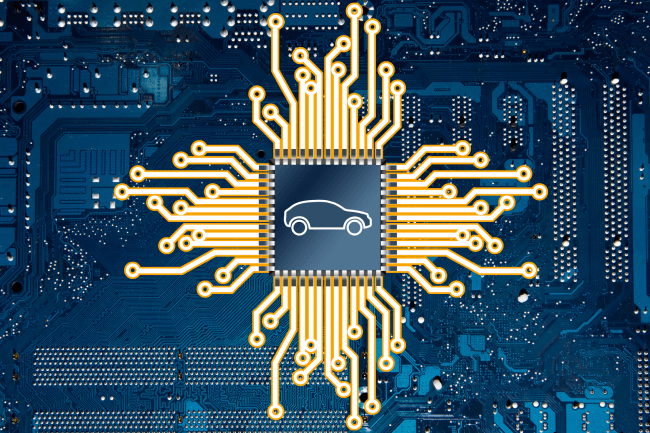The Semiconductor Shortage: How RISC-V & Other Technologies are Taking Advantage
Insights | 23-01-2023 | By Robin Mitchell
With the semiconductor shortage showing signs of improvement, engineers now have the chance to explore new hardware platforms and alternatives. The current supply chain issues present challenges but also present a golden opportunity for technologies such as RISC-V, RP2040, GD32, ARM and STM32 to shine. It's important for engineers to consider diversifying their options and look into these new possibilities, as they may potentially replace parts currently facing supply chain issues.
What challenges do semiconductor supply chain issues present?
Any engineer who has been involved in electronics design for the past two years will most likely fully understand the challenges presented by the COVID pandemic. While technologies such as video calls have enabled many to work remotely, some aspects of working life have suffered, and for engineers, the inability to access physical parts and work in engineering labs has prevented engineers from being able to design products as fast as they would like.
But one problem that has been universal across all electronics manufacturing has been semiconductor shortages. The cause of the global semiconductor shortage comes from the combination of ordering practices by device manufacturers and the length of time needed to fabricate semiconductor devices.
Simply put, most manufacturers (including semiconductor foundries) would work around a Just-In-Time practice whereby parts are ordered as needed, with few parties ever holding significant quantities in storage. Before the COVID pandemic, semiconductor foundries manufactured ICs based on anticipated sales of electronics goods (such as vehicles, laptops, and smartphones), but when COVID hit, many manufacturing industries effectively ground to a halt (primarily the automotive industry). This resulted in virtually no sales in automotive components, and therefore semiconductor foundries halted production of new automotive components.
Instead, the consumer electronics industry was booming now that people would need new office equipment to work remotely, which saw the demand for consumer-grade semiconductors skyrocket. As such, semiconductor manufacturers rushed to meet this new demand in the hope of capitalising on the change in the market. However, as the automotive industry began to resume operation, the complete lack of new automotive parts quickly saw automotive factories halt operation. Thus, the semiconductor industry switched to manufacturing automotive components, but because the time to produce new parts can be as long as 6 months, both the commercial and automotive sectors saw massive delays.
As a result, manufacturing new electronic products over the past two years has been extremely challenging as many components currently face long lead times (some over 52 weeks). Thus, many engineering companies have faced issues with generating revenue, and some companies have become so desperate that they have turned to salvaging components from other commercial products (such as an unnamed automotive maker that purchased new washing machines for a specific part), or worse, turning to the grey market that is rife with counterfeits and second-hand parts.

How could this be a golden opportunity for engineers?
While many see the current semiconductor shortage as a crisis, others (such as myself) see it as a golden opportunity to discover new platforms, device families, and technologies that would otherwise go unnoticed. Undoubtedly, the most popular devices commonly used by engineers (such as the STM32) have been hit the hardest by the shortage, but those manufactured by companies with less market dominance not only have decent levels of stock but can readily be used in new designs.
One such technology that will do well in this ongoing shortage is RISC-V, and this is because more chip companies are moving towards the CPU architecture, orders have only been recently placed, and their use in commercial products is still limited compared to mainstream devices. In addition, the recent hype around RISC-V, combined with the lack of other parts, is pushing engineers to explore the architecture, even if they would normally avoid it. In fact, the abundance of RISC-V devices could give engineers the perfect opportunity to jump ship onto a new platform that not only has the benefit of code compatibility but eases dependence on unfair licenses and royalties. One such example is the latest GD32 devices from GigaDevice, which feature a RISC-V 32-bit core, max speed of 108MHz, and SRAM up to 16KB.
Another example of a microcontroller that could quickly see widespread use is the Raspberry Pi Pico 2040. The small microcontroller integrates a powerful ARM microcontroller core, numerous peripherals, a PIO state machine, and USB programmability, something that not many other mainstream devices offer. On top of that, the RP2040 is extremely cheap, widely available, and suitable for new designs, meaning that it has the capacity to replace many existing microcontrollers found in commercial devices. Before 2020, such a microcontroller may have paled in comparison to other mainstream microcontrollers, but engineers have little choice when it’s the only one available in sizeable quantities. That isn’t to say that the RP2040 is a bad microcontroller. On the contrary, it’s a fantastic platform, but the fact that it is available right now means that engineers can continue developing new products.
Should engineers consider diversifying their platforms?
There is no doubt that engineers should always aim to diversify their platforms, as being able to work with different devices across different manufacturers not only looks good on a CV but can massively help manufacturers during supply chain issues. At the same time, the ability to work across different platforms also allows engineers to make better choices during device selection, especially if the target application is a specialist market.
So, will you decide to be brave and explore the more unusual platforms that exist? Or will you play it safe and hope that the devices you’re familiar with will come back?

